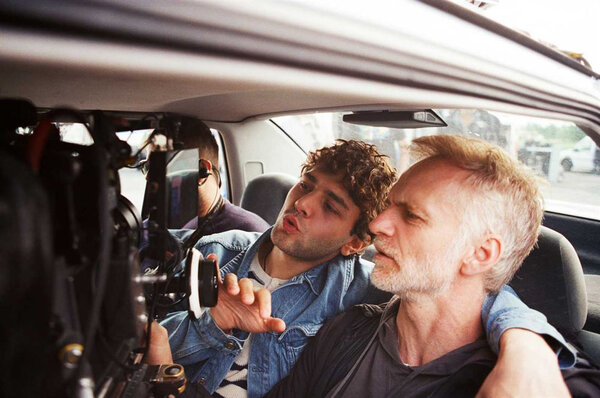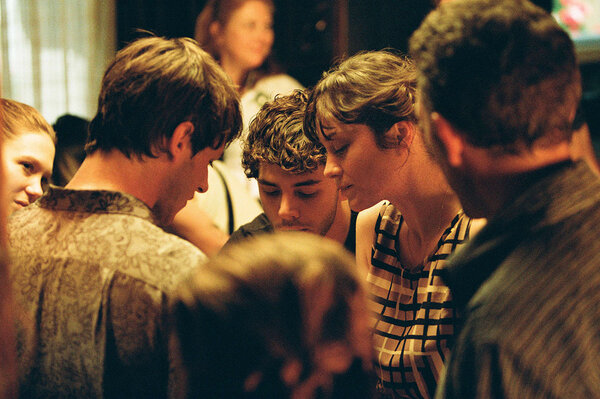Cinematographer André Turpin discusses his work on Xavier Dolan’s film "It’s Only the End of the World"
Adapted from the eponymous play by Jean-Luc Lagarce, the film tells the story of a young author who returns to his home town for the first time in twelve years in order to tell his loved ones he is about to die.
Starring Gaspard Ulliel, Marion Cotillard, Léa Seydoux, Vincent Cassel, Nathalie Baye.

Because most of the scenes in It’s Only the End of the World were filmed with five characters, was there a strategy for the shooting script ?
André Turpin : The strategy was simple, based on close-ups for each character in a basic system of shot reverse shot. We often worked with a Steadicam to readjust the location of the camera, in order to be closer to the gaze of the characters or to create an emotional or dramatic effect. 70% of the film is built like that, based on long dialogue scenes where the focus is on the characters.
You didn’t opt for two cameras ?
AT : No ! Xavier hates shooting with two cameras and I don’t mind because I hate having to light for two cameras ! We spent a day and a half shooting the climax scene that lasts for only five or six minutes and is very emotionally intense. Xavier made a tremendous amount of takes despite the fact that we shot using 35mm.
He also hates filming in studio ! So it must be a real challenge shooting a film on location that takes place over a single afternoon ?
AT : Yes, somewhat ... We shot in a house in Laval, north of Montreal, which was completely redecorated. For scenes shot in front of the house, the light is always direct, the sun sets as the film progresses, and the light gets more colourful as the sun sets. I either used the real sun’s light, or I relit.
In the backyard, the lighting was more “English ", softer and never directional. When we shot in the morning when the sun came in, we had to deflect it.
But what about the variations of light ?
AT : I did not like that at all ! Indoors, no problem, I controlled the lighting with a 18 kW spot permanently installed on a crane, and a few 9 kW on stands. For one of the outdoor scenes – the one you can see on the Internet ! – it was hell. Several scenes were shot over the course of an entire day, this was the only one that was shot outdoors over the course of an entire day… and there were the wrong colours all day long ! We had to use artificial lighting, it was really a difficult scene for me. Normally, the characters are under a sort of pergola, so I lit taking the pergola into account, but the pergola is never seen ! While filming, the columns of the pergola were visible in the frame, so the viewer could understand there was a pergola, but in postproduction, the columns were erased ! So, the characters look like they’re against a blue background, it’s a bit strange…
Was there a secret to lighting all of these different actors ?
AT : They were all photogenic in different ways. Basically, I worked with the lighting outdoors but indoors I used the least amount of artificial lighting possible. Sometimes I used Joker-Bugs reflected off of gauze, or some LED panels on a dimmer. The directional lighting came from the opposite side of the camera and I always tried not to shine light on an actor above his shoulders. The faces were always lit using diffused lighting.

The image is more conventional than on Xavier’s other films…
AT : Yes, especially concerning camera movement. His style is recognizable when the camera participates in the choreography of the flash-back scenes, with strong colours, yellow, mauve, magenta, blue, à la Xavier Dolan !
The rest of the film is white, rather cold and bluish ; I lit using daylight and filtered using an 85B. During the screen tests, I realized that in colour timing it was easier to get rid of the blue that resulted from the filtering than cooling off an image exposed using an 85.
The format changed between shooting and the actual film. Why ?
AT : We shot the film in 2.35. I think that one day, in editing, Xavier didn’t realize that the monitor caches weren’t positioned. He realized it that evening and decided the film was more human, less pretentious in 1.85. So everything was cropped ! And we had to get rid of microphones ! I always thought that Xavier’s close-ups were a little too close, so by opening up the top and bottom of the frame, the close-ups get to breathe a bit.
Did you colour time the film for both 35mm and DCP ?
AT : Yes, because the film will be screened at Cannes in 35 mm ! We first colour timed in digital to prepare for the blow-up, but the 35mm blow-up tests weren’t satisfying. For the DCP copy, we’d found things that were very nuanced, very fine. With the 35mm copy, it was like we’d lost those subtleties. But at the same time, we knew that there was the potential for great depth with the film copy, so we did the colour timing over again with more saturation. So, the two copies, digital and 35mm, are quite different from one another. The positive was shot on Vision Premier, Kodak’s luxury film, which is very rich with deep blacks and strong colours. It’s really lovely !
What can you say about the comparison between the two formats in screening ?
AT : The 35mm copy is more vibrant, more saturated, and richer. The downside of film is its instability and its movement, which adds something to the viewer’s experience, something rawer…maybe more emotion…
(Interview conducted by Brigitte Barbier for the AFC, and translated from French by Alexander Baron-Raiffe)
 En
En Fr
Fr




